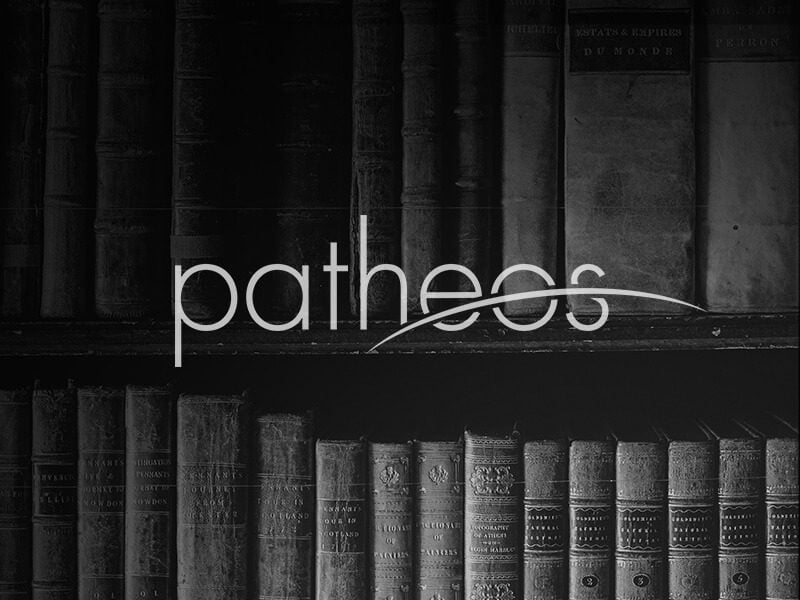If you’re coming here from Conversion Diary, I really recommend you take a look at a guest post series I had this week on the Mormon priesthood. After a couple news sources started reporting on Romney’s priesthood and role as a bishop, and asking whether we’d be concerned if a Methodist priest or a Catholic bishop became a politician, I realized I needed more data about how Mormons think about priesthood.
A college friend of mine graciously stepped in, explained what priesthood means in the LDS tradition and then answered questions that started as simple clarifications and went on to science fiction and theology of the body. You can check out all three posts at the link above.
I’m glad he gave us data and corrected some widely-repeated misperceptions. In his honor, the theme for this week’s Takes is Justice (which tends to lead to depressing posts, so, if you make it all the way through, I’ve put a well-designed robot at the end to cheer us up).
First off, I really appreciated Chris’s anti-death penalty op-ed this week in the Yale Daily News. He’s writing from the Catholic perspective, but keeps his arguments accessible to a secular audience.
As a Catholic, I stand against the death penalty on moral grounds. Unfortunately, many misunderstand the nature of the Church’s teaching on this subject, associating it only with other issues of respecting human life — opposition to abortion and unjust war among them — without making the connection to justice. I wish to highlight the Church’s teachings on justice, as I think they ought be embraced not only by Catholics, but also by all residents of my home state.
Very often, our ideas of punishment are retributive rather than rehabilitative, full of vengeance rather than chastisement. The Catholic Catechism, seeking humility in human judgment, teaches that punishment in civil society should focus on the safety of society and the rehabilitation of the criminal. The death penalty can only be justified when it is necessary to protect society from the aggressor. Capital punishment clearly fails the rehabilitation test as well, focusing on a murderer not as a broken human to rebuild, but as a futile sacrifice — a death that can never bring our loved ones back to life.
And now there’s a theology fight in the comments section, so that’s always fun.
Opponents of the death penalty sometimes say “Better 100 guilty men go free than one innocent man be put to death.” In n Guilty Men, a quirky paper for the University of Pennsylvania Law review, Alexander Volokh compiles all the proportions that legal scholars and cultural critics have claimed as the appropriate balance, starting with Abraham’s negotiation with God in Genesis.
In an essay titled “Raise the Crime Rate,” Christopher Glazek of n+1 magazine wants us to consider a much more radical trade-off. He suggests the American prison system is a modern-day Omelas*, and we need to abolish it all together.
Statistics are notoriously slippery, but the figures that suggest that violence has been disappearing in the United States contain a blind spot so large that to cite them uncritically, as the major papers do, is to collude in an epic con. Uncounted in the official tallies are the hundreds of thousands of crimes that take place in the country’s prison system, a vast and growing residential network whose forsaken tenants increasingly bear the brunt of America’s propensity for anger and violence.
Crime has not fallen in the United States—it’s been shifted. Just as Wall Street connived with regulators to transfer financial risk from spendthrift banks to careless home buyers, so have federal, state, and local legislatures succeeded in rerouting criminal risk away from urban centers and concentrating it in a proliferating web of hyperhells. The statistics touting the country’s crime-reduction miracle, when juxtaposed with those documenting the quantity of rape and assault that takes place each year within the correctional system, are exposed as not merely a lie, or even a damn lie—but as the single most shameful lie in American life.
*The reference is to the Ursula Le Guin short story “The Ones Who Walk Away From Omelas“
The book that first got me fired up about the criminal justice system was Actual Innocence, a collection of case profiles written by the founders of the Innocence Project. I strongly recommend it to everyone; it did a lot to inform my skepticism.
Many of the exonerations the Innocence Project won turned on DNA evidence. The latest Cato Unbound symposia is all about exploring what the prevalence of DNA testing means for capital punishment. It’s easier to prove someone’s innocence and easier to establish guilt fairly definitively. So should we feel more comfortable sentencing prisoners to death if they were convicted using DNA evidence?
I side with Chris and say no, since the ultimate aim of the criminal justice system should be rehabilitation, not retribution. If rehabilitation seems impossible, better to keep trying while keeping the prisoner contained.
Ok, you made it to the end. Take a deep breath and watch the DARPA-funded robot that can jump 30 feet. (h/t Wired)
And just don’t think about how other military robots are used.
For more Quick Takes, visit Conversion Diary!












